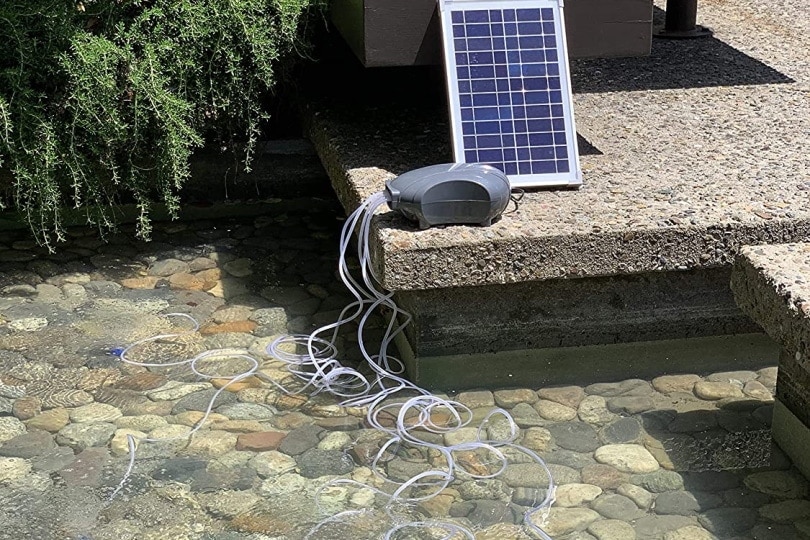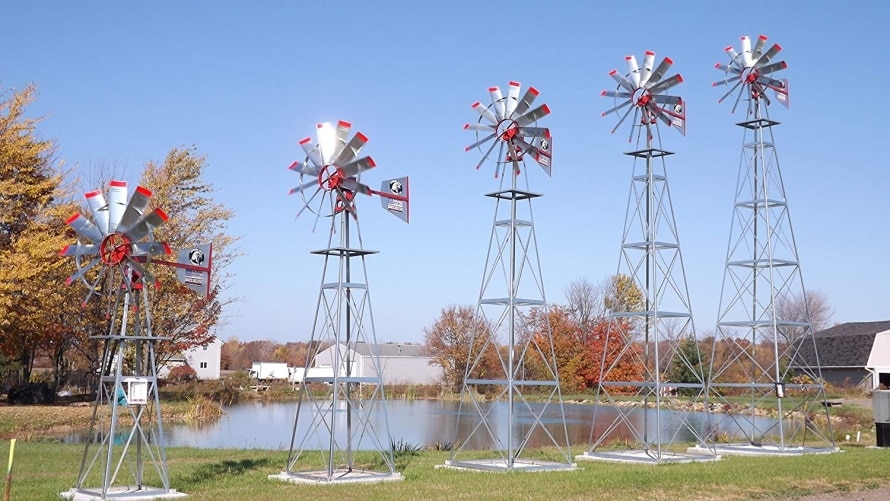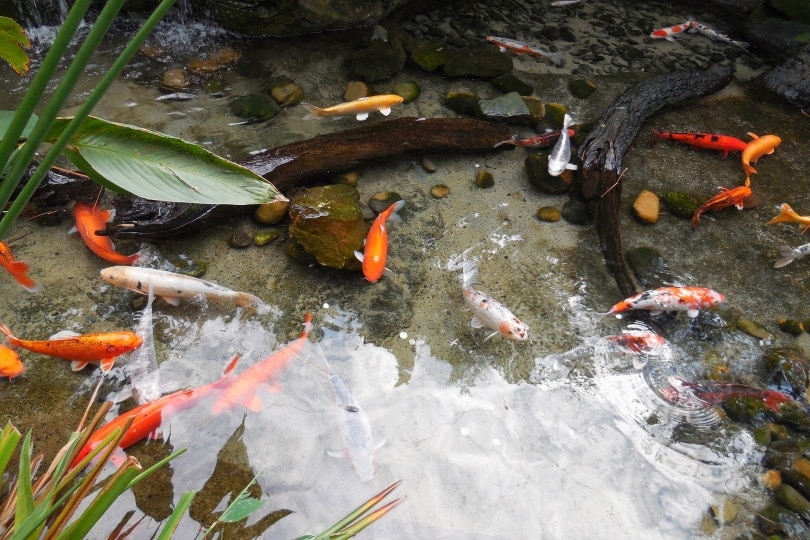If you have a pond, you will need to aerate it to help improve the water quality for any fish or other types of animals that might live there. Aeration will also help circulate the water, reducing the number of mosquitos that can grow. There are plenty of commercial pumps available that use electricity, and many people are afraid to mix electricity with water. If you are looking for a safer way to add oxygen to your pond, keep reading while we look at several different methods you can use and even some DIY projects to help you improve your pond.

The 3 Alternative Aeration Methods
1. Solar Fountain Pumps
One of the best alternatives to mains electricity is solar power. Even though solar energy is still technically electricity, it’s not the high-powered fish-killing current that’s coming from your home. Solar fountain pumps come in a wide range of sizes to fit any budget, and they can be a great way to add oxygen to the water in a small to medium-sized pond. Water grabs oxygen from the air as it’s ejected from the fountain and holds it as it falls back into the pond.
The downside to this system is that the oxygen remains close to the fountain, so you may need several to cover a larger area. Fountains are also unsuitable for ponds that are more than a few feet deep as the oxygen will remain close to the surface. Another downside to solar fountains is that they only work in ponds that get plenty of direct sunlight and might not work efficiently in a pond with many trees around it.
- Inexpensive
- Easy to set up
- Works well
- Only for smaller ponds
- Only suitable for ponds in direct sunlight
2. Solar Aerators

Solar aerators use solar power like our last option, but they operate differently. These devices pump air through a hose and diffuser, which results in a stream of bubbles rising to the surface. You see this type of aerator frequently in aquariums. It allows you to deliver oxygen to much deeper waters, and the rising bubbles also create movement in the water that helps scatter the oxygen further from the source.
The downside to solar aerators is the need for plenty of strong sunlight to run the pump. It will always turn off at night, so it’s not a great choice for ponds that require continuous aeration, and even though the bubbles create movement, the aeration isn’t suitable for larger ponds.
- Inexpensive
- Easy to set up
- Aerates deep water
- Creates movement
- Only for smaller ponds
- Only suitable for ponds in direct sunlight.
3. Windmills

Windmill aerators are similar to solar-powered ones but rely on wind instead. Windpower allows you to deliver oxygen to your water 24 hours per day as long as wind speeds stay between 3 and 5 miles per hour. Higher wind speeds will deliver more oxygen and can provide enough for even a large pond in areas that experience a lot of air movement.
The downside to windmills is that there will be days with no wind, and these devices are quite large and might even require professional installation. Even if you build it, your costs are likely to be quite high.
- Able to aerate large ponds
- Provides oxygen day and night
- Expensive
- May require professional installation
- Dependent on weather

The 2 Homemade Pond Aerators
4. Aquatic Plants

If you are looking for a homemade pond aerator, one of the best ways to add oxygen to the water is with oxygen-producing aquatic plants. There are many suitable species that you can choose from, including the Anacharis, which is easy to grow and can usually last through the winter if your pond doesn’t freeze solid. It provides plenty of oxygen as well as shelter for your pond dwellers.
5. Hose
Another way you can aerate your pond without purchasing any equipment is to use your garden hose. The garden hose allows you to pump water into the pond from your home. We recommend using a sprayer attachment so you can create a type of fountain. The hose is a good method because the water coming from your home is likely more oxygenated than stagnant pond water and using an attachment to create a fountain will increase it.

Summary
As you can see, there are several alternatives to using electricity to add more oxygen to your pool. We highly recommend starting with live plants, especially the Anacharis. These plants will continue to live as long as the water doesn’t freeze solid and absorb nutrients through their stem, so you don’t even need to plant them. You can let them float. Once you have the live plants, we recommend adding solar aerators, or if your budget allows Windmill aerators add bubbling aeration to the bottom of your pond. If you still need more oxygen, you can add solar fountains or create a DIY fountain with your garden hose to add fresh water along with oxygen.
We hope you have enjoyed reading over this short guide, and it has helped answer your questions. If we have helped you solve your oxygen problem without using a dangerous electric pump, please share this guide to aerating a pond without electricity on Facebook and Twitter.
Featured Image Credit: Ravi Mohan, Pixabay
